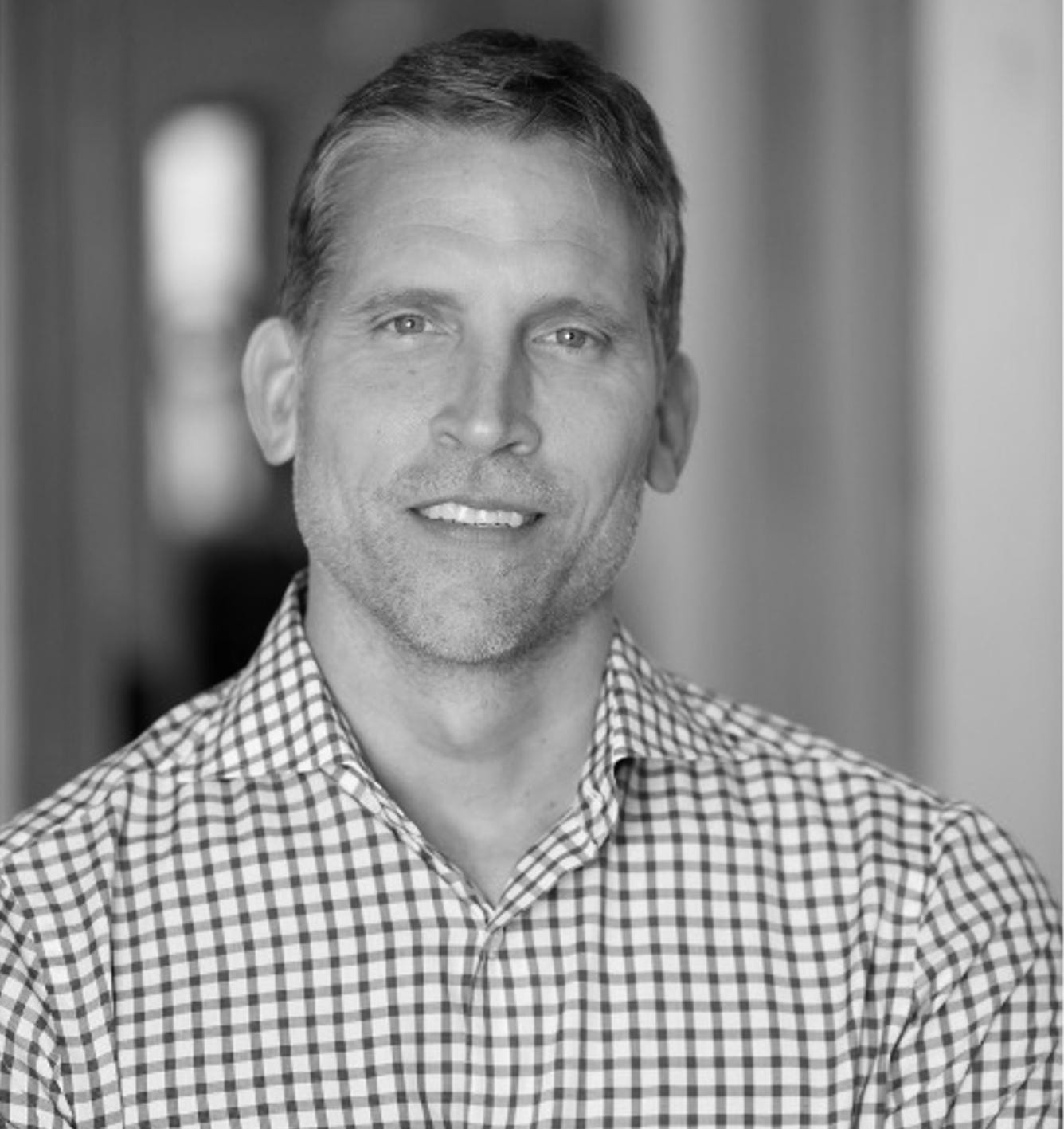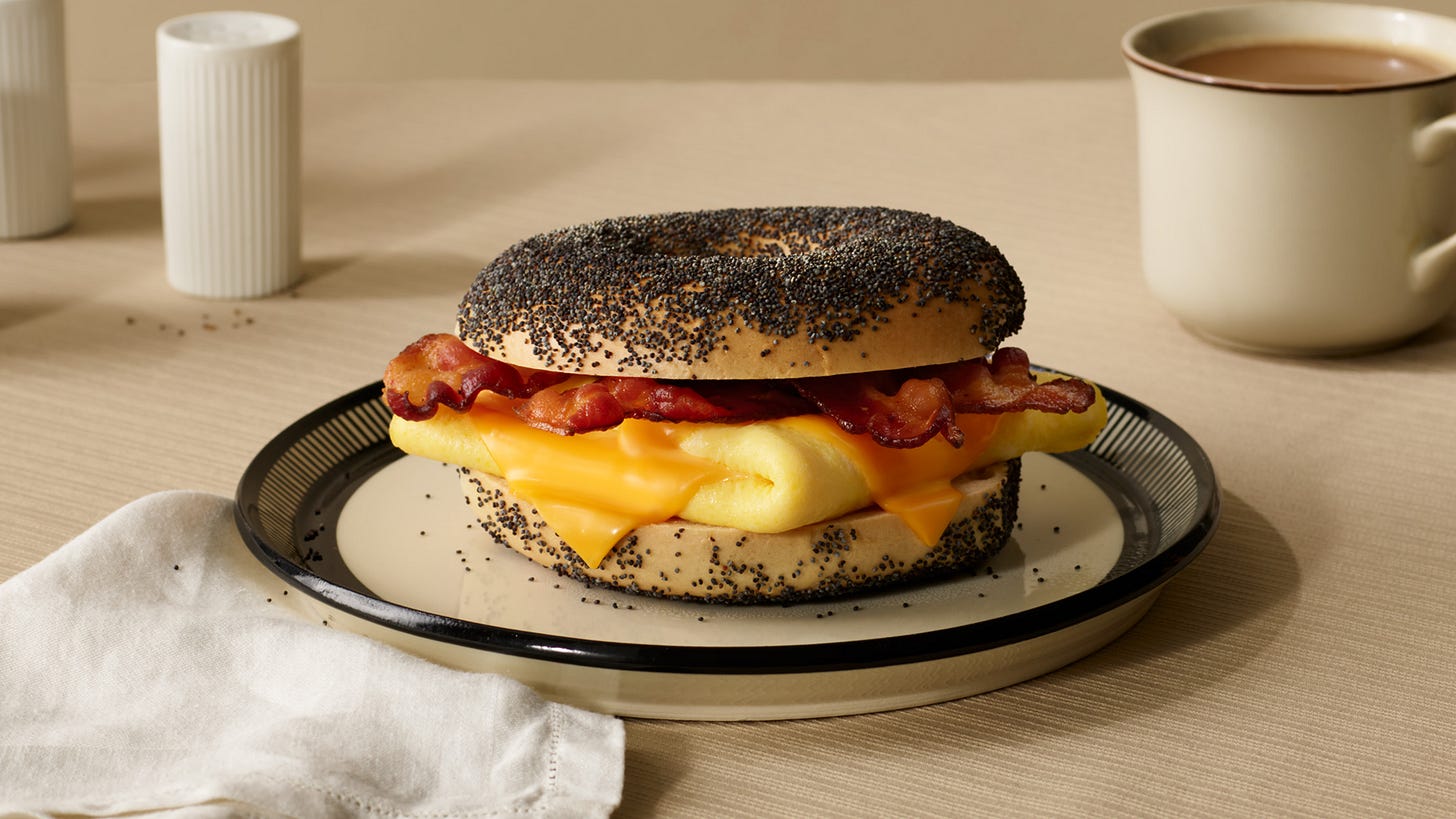Jay Rushin is bringing H&H Bagels into the modern era
The H&H Bagels CEO on the brand's wild history, how they're staying relevant, and the logistics of selling thousands of bagels a day.
If you enjoyed this issue, head to the bottom to like or comment so others can find it. Thank you!
Jay Rushin is the CEO of H&H Bagels, a storied New York City-based brand that’s been around since the 1970s. After a very tumultuous history, Jay acquired the brand in 2014 and has been working to bring the bagel company into the modern era. We talked about the brand’s wild history, how they’re staying relevant, and the logistics of selling thousands of bagels around the country each day.
Oh, and his go-to order is a bacon, egg, and cheese on a plain bagel.
Brianna Plaza: H&H Bagels has been around for quite a while and has a lot of history, from multiple owners, a couple bankruptcies, and an owner indictment. How has the company navigated so much and stayed alive?
Jay Rushin: It’s definitely been eventful. The original founder was from Puerto Rico and came to New York in the mid 1970s. He saw a small bagel operation on the Upper West Side, acquired it, and renamed it after himself and his cousin: H&H Midtown Bagels. He then opened another location on the Upper East Side and called that one H&H Midtown Bagels East.
A couple years later, they went bankrupt for the first time, and the two locations went to auction separately. He won the auction for the west side location, but not for the east side location, so the two locations essentially got split up into two different ownership groups.
Then in 2011, there was a much more well known bankruptcy where he drove everything off a cliff. The Upper West Side location and a factory in New Jersey were shut down, the IRS seized his assets, and he had to spend his weekends at Rikers. Since the Upper East Side was under different ownership, it kept doing its thing and never shut down.
I’m working on Wall Street looking for a business to acquire and I came across H&H. There was a group of owners that had operated the brand for about 10 years and they were looking to get out. I was attracted to this great brand that has so much pop culture and New York history, so I found it really intriguing. I had been a lifelong foodie and I was attracted to the food industry coming from Wall Street. I thought it fit my skillset and I thought I could turn it around.
I am the world’s worst salesman but I feel like the company sells itself. I was presented a good opportunity to step in and try to be an entrepreneur.
Brianna Plaza: How do you stay relevant in an expanding bagel market?
Jay Rushin: We’re staying relevant by going national. We don’t think we need to stay in New York to be relevant. We’ve got five operating locations in New York, which is plenty. We’ve currently have a couple licensed locations out at the airports, which has been nice for the brand.
But pretty much 100% of our focus is growing nationally. We opened our first location outside of New York in Boca Raton last September. We’ve got a whole host of openings over the next six months. So we’ve got a lot going on right now.
Brianna Plaza: Do you think you lose bit of bagel credibility as you expand beyond the city?
Jay Rushin: Maybe we’ve lost some already. The reality is, we’ve modernized our entire service model and our entire brick and mortar experience, and that’s what has afforded us the opportunity to go national. But maybe New Yorkers still want the 1980s version of what bagels used to be.
We think people want nicer places to eat and get their food. We haven’t changed our process or our recipes and if anything, we’ve improved the quality of our products over the last decade plus. We continue to strive to meet those consumer needs.
Brianna Plaza: I grew up in places that are not known for bagels, and we had a lot of mediocre chains. How do you convince consumers that a national chain has good bagels?
Jay Rushin: All of our bagels are made here in New York City, so worldwide they will be authentic New York City bagels. We use the highest quality flour unlike many brands on the national stage. We crack fresh eggs. We slice fresh avocados. I mean, up and down the entire brand, we care about food quality and that kind of differs from the other national bagel chains.
Making bagels is not easy and making them at scale is infinitely harder. It has taken us a long time to get our 20,000 sq foot bakery in Queens to be able to support our growth and produce a high end product at scale.
Brianna Plaza: With a production facility in Queens, how do you maintain quality as your bagels travel further away from the facility?
Jay Rushin: Every location will receive product from Queens and bake them off in specialized ovens and be able to put out hot bagels all day long.
They are fully made then kettle-boiled, which is unusual for our scale. It’s very difficult to make tens of millions of bagels a year and still fully kettle-boiled, but we do. Then the dough is then slightly baked just to form the circle, then flash frozen and shipped to warehouses across the country. They’re delivered to the locations and those locations then do the full finishing bake-off.
We developed this process through like five years of R&D.
Brianna Plaza: How did you refine that process? To be able to cook something in New York and make sure it holds up in the travel process.
Jay Rushin: One of the good things about our history is that we’ve always done a fair amount of wholesale business. We were already comfortable making and handling large amounts of bagels. We had already been sending our bagels around the country, so the logistics and transportation of bagels didn’t scare us. We had been exporting our bagels to Taiwan and South Korea over the years which gets you more comfortable with the logistics of moving bagels around.
If you’ve never done that before and you try franchising nationally, then you have to figure all these logistics out, it’s almost too high of a mountain to climb. We kind of reversed it. We already knew how to move bagels, so then we went and open more locations.
We already knew how to make high volumes at a high quality, but modernizing that process and using better equipment was a long process. We had to get our heads around finding new vendors and ovens that could do a better job than the old fashioned ovens that we had.
We then had to perfect the whole process. Where can we maximize the quality for the end consumer? Where in the manufacturing cycle do you stop the process to then restart in another place? We probably went through thousands of hours of testing and iterating.
It’s a process but I am thankful we at least knew how to move bagels around the world. That removed one very large challenge from the equation.
Brianna Plaza: Is the menu the same at all locations or does it localize?
Jay Rushin: For now, pretty much every menu is the same. We have a pretty concise menu, especially in the bagel world. Since I took over the company, our menu item count is down about 75% and we focus now only on egg sandwiches and spreads. If you want something like a salad, you probably shouldn’t be coming to H&H.
By focusing on a smaller menu, the products end up being better because you can focus on higher quality products. You have less inventory and products you have to worry about. There’s less mistakes from your employees because you’re not trying to make 150 items, you’re just making 40 really good ones. A smaller menu benefits everyone up and down the line, all the way to the consumer.







I loved this story!! Where can we get them in the West???